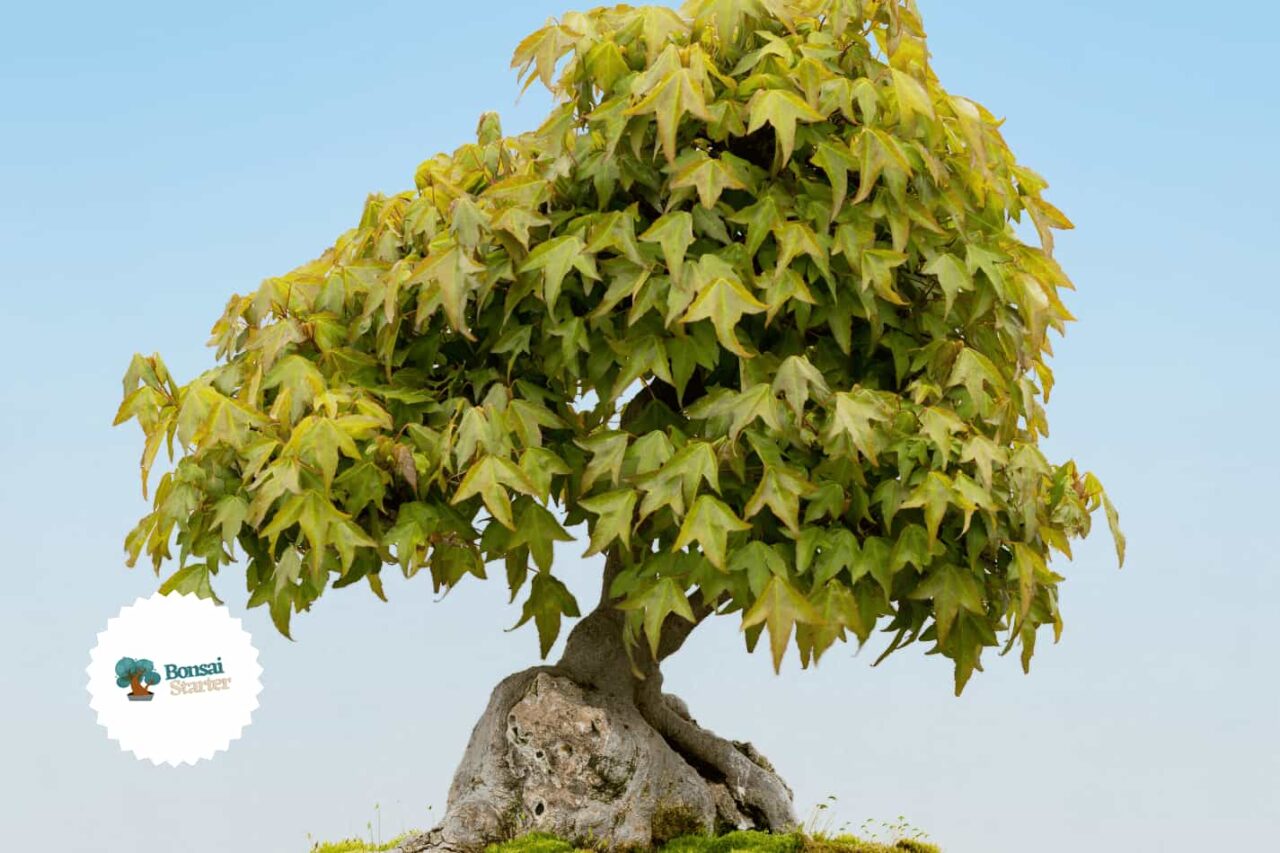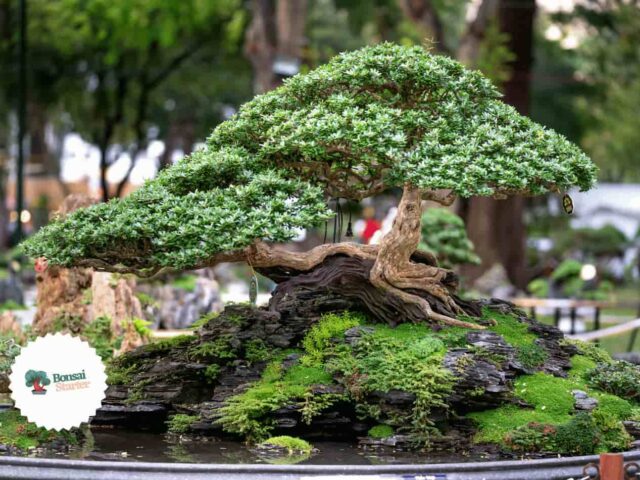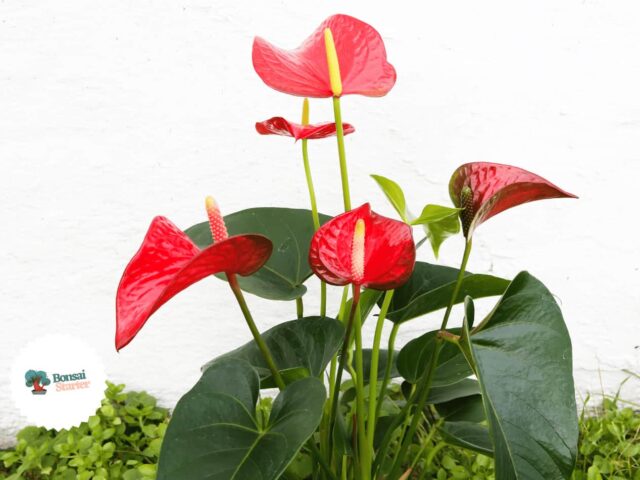Are you looking for an exciting bonsai tree? The trident maple can be an excellent choice for beginners.
In this article, we’ll cover everything you need to know about the trident maple as a bonsai tree, from what it is to how to care for it.
We’ll discuss watering habits, pruning and wiring, pest and diseases, and repotting. If you’re considering purchasing a trident maple bonsai, this article will provide you with all the information you need to make an informed decision.
Keep reading to learn more!

What Is a Bonsai Trident Maple?
The trident maple is a species of maple tree (Acer buergerianum) ideal for developing into a bonsai. Growing up to 40 feet, it displays an array of textures, colors, sizes, and shapes, offering the perfect scope for creative styling.
The rounded crown with radial branches can be easily manipulated to create interesting movements and directions in the tree line.
Although this small leaf type Acer is deciduous and its foliage changes color with seasonality, it can be trimmed back vigorously without fear as it can regenerate new leaves quickly.
Bonsai enthusiasts appreciate how it develops tiny aerial roots when grown on their own roots or after grafting onto sturdier rootstock.
Its glossy green leaves transform into red shades during fall season adding beauty to any landscape year-round!
How Often Should I Water a Bonsai Trident Maple?
Watering a bonsai trident maple is an essential part of maintaining its health. As a general guide, the tree should be watered every two to three days if it is indoors in mildly warm conditions.
If temperatures are higher, water more frequently for moisture to penetrate the root system and keep the soil moist without over-saturating it.
The type of potting soil used will also determine how often you will need to water—dense soils may allow less frequent watering than those that are lightweight and loamy.
To gauge when the trident maple needs watering before actually making contact with moisture, check the weight of your bonsai pot—if it feels light, it’s likely time for watering!
Make sure not to let your tree dry out completely—this could cause stress on its growth and lead to wilting leaves that won’t bounce back quickly.
Remember that each tree type is unique and will require specific attention based on lighting, temperature, air circulation, and other environmental factors that may influence its growing speed or overall health.
Experiment with frequencies until you can learn the optimal needs for caring for your particular bonsai!
Pruning and Wiring Trident Maple Bonsai
Pruning and wiring a Trident Maple (Acer buergerianum) bonsai present a unique opportunity for those seeking to recreate a miniature version of mother nature.
Pruning is an integral step for creating an aesthetically pleasing bonsai, which can be further enhanced by proper wiring, allowing the staked trunk to take on interesting shapes with minimal effort.
Trident Maple bonsais can require frequent pruning when young due to their fast growth; however, they develop strong wood as they age, making them more resistant to bending.
The tree produces full foliage early in the season and maintains its color year-round with autumn tones during fall.
To keep it healthy, trimming should be done every few months depending on how fast it grows, and overgrown branches should be removed accordingly.
The wiring of your Trident Maple will depend heavily on each species’ tolerance of metals used in the craft and how much each branch can bend without breaking too easily or becoming damaged over time.
With patience and practice mastering reflexivity techniques, you can shape your trident into any desired form within reachable parameters such as height, sweeping angle of bottom branches, growing directions from previously shaped trunks.
This method leads up to an even softer finish for quick yet satisfactory remolding steps down the cultivation line that works towards polishing off your ideal miniature tree scene from bald roots up into
Common Pests and Diseases
Taking care of a bonsai is vital, particularly when hoarding pests and diseases. Steps should be taken immediately if a trident maple bonsai sees an infestation or illness.
Fungus, mold, and mildew are common ailments for this tree species, but tiny insect pests can plunder the plant’s leaves and stems.
It is crucial for newbies learning about the trident maple to familiarise themselves with prevention methods such as pest control sprays or natural remedies such as garlic juice extract or neem oil solutions.
Regular inspection of the trident maple by an expert gardener can also help alert one towards potential threats before it’s too late!
Trident Maple Bonsai Care Guide
The trident maple is a beloved bonsai tree and one of the best choices for learning the craft.
For starters, their hardy nature and ability to endure changing weather conditions are enough to try them. They can also be pruned to various sizes, making them ideal for small living spaces.
For maximum success with trident maples, start by providing plenty of sunlight throughout the day and replenishing the soil with nutrients such as fertilizer every three months.
Regular misting sessions may also be necessary, depending on your climate, to keep it hydrated, but avoid over-watering as that could lead to root rot or mildew accumulation.
Finally, consider trimming some leaves when they hit maturity and establishing an aggressive pruning schedule if you want your bonsai’s shape in check – this will help keep its growth manageable whenever you need it to stay within specific parameters.
Overall, following these steps should ensure that your trident maple bonsai continues thriving regardless of external conditions
Do You Need to Repot Trident Maple Bonsai?
While not always necessary, repotting a trident maple bonsai can bring numerous benefits.
This popular species is the perfect choice for beginners and experienced gardeners alike, but if proper repotting techniques are employed, it can become an even more wonderful specimen.
The regular repotting of a trident maple bonsai helps to reduce root congestion and encourages vigorous growth.
Removing the roots from the pot every couple of years allows an opportunity to inspect root health, make any pruning or trimming needed, and add new soil as needed.
In addition, this process also prevents soil nutrient depletion over time.
Furthermore, selecting the right soil mix is essential for a flourishing trident maple bonsai.
Clay soils contain nutrients that leach slowly – excellent for repotting purposes – while sand-based mixes better support oxygenation and water drainage which are essential for healthy root development.
Utilizing leading potting techniques and ideal soil conditions will yield spectacular results in your trident maple bonsai!
Final Conclusion
Taking care of a Trident Maple Bonsai can be a rewarding experience. Not only is it an opportunity to create something truly beautiful, but by properly caring for the tree you’re helping preserve an ancient art form.
To ensure that your bonsai is healthy and vibrant, make sure that you follow all the guidelines outlined in this guide! If you are interested in learning more about bonsai, join our newsletter today!




